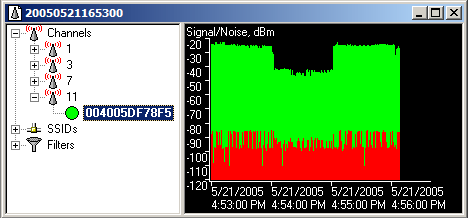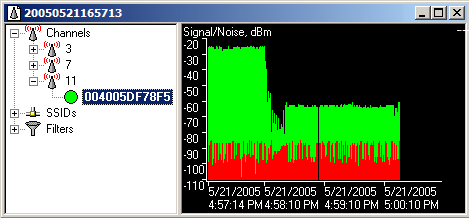At 4:54, I placed my hand and arm between the computer and the access point. As you see, my arm weakened the signal (graphed in green) by absorbing energy. When I removed my arm after another minute, the signal rose to its previous power level.
The graph also shows the strength the background noise (red) my computer detected. The noise level was also cut by my hand and arm. A radio link will be better if there is a strong signal and little noise, if there is a high signal to noise ratio (SNR).

Note that the power fell even further while I was walking from one room to the other. At that time, the antenna was pointed in a different direction, and the signal had to travel through my body.
Loss of power or attenuation due to the distance between a transmitter and receiver is called free space loss.
